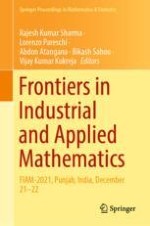2023 | OriginalPaper | Chapter
Heat Transfer Model for Silk Finishing Calender
Authors : Neelam Gupta, Neel Kanth
Published in: Frontiers in Industrial and Applied Mathematics
Publisher: Springer Nature Singapore
Activate our intelligent search to find suitable subject content or patents.
Select sections of text to find matching patents with Artificial Intelligence. powered by
Select sections of text to find additional relevant content using AI-assisted search. powered by
